Explore Articles Filed Under: Ayahuasca
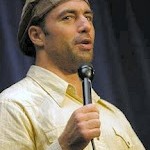
Joe Rogan is a stand-up comic and comic actor. He appeared as a character in the sitcom NewsRadio, as a host on the reality show Fear Factor, and — with an apparently extensive martial arts background — as a color commentator for the Ultimate Fighting Championship. His comedic style is iconoclastic and confrontational. He has frequently accused other comedians of plagiarism, and has publicly espoused a number of conspiracy theories regarding the Apollo moon landing, the Kennedy assassination, and the attack on the World Trade Center. He has challenged Wesley Snipes to a mixed martial arts combat. He has been an occasional guest on the Mancow Show and the Howard Stern show; he has a sensory deprivation tank in his basement. He has also — and this is probably no surprise by now — been deeply influenced by the theories of Terence McKenna and Rick Strassman about DMT.
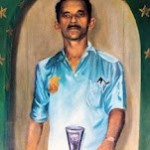
While it is apparently legal in the United States to possess the ayahuasca vine and its β-carboline constituents, it is clearly illegal to possess DMT, or any plants, such as chacruna, that contain DMT. Under Chapter 13 of the Controlled Substances Act, DMT is classified as a Schedule I drug, meaning the Drug Enforcement Administration has found that it has a high potential for abuse, has no currently accepted medical use in treatment in the United States, and lacks accepted safety for use under medical supervision. A person who manufactures, distributes, or dispenses DMT, or possesses DMT with intent to manufacture, distribute, or dispense it, “shall be sentenced to a term of imprisonment of not more than 20 years.”
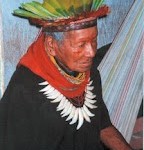
Shamans in the Amazon are not unaware of the problems brought about by their encounter with global modernity. On June 1 through 8, 1999, forty of the most prominent traditional healers from seven indigenous peoples convened in Yurayaco, Colombia, to hold an Encuentro de Taitas, a Meeting of Shamans, and to discuss the future of traditional medicine. One result of that meeting was the publication of two documents — a Código de ética de la medicina indígena del piedemonte Amazónico Colombiano, Code of Ethics of Indigenous Medicine of the Foothills of the Colombian Amazon, and the Declaración del Encuentro de Taitas, Declaration of the Meeting of Shamans, often called the Yurayaco Declaration.

Mestizo shamans often mix additional ingredients into the basic ayahuasca drink. In addition to the ayahuasca (Banisteriopsis caapi) and its companion chacruna (Psychotria viridis), chagraponga (Diplopterys cabrerana), or sameruca (Psychotria carthaginensis), some shamans may, at different times, add plants that are believed to modulate the experience of the drink in some way.
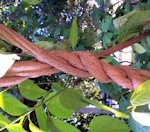
Just about ten years ago, Amazonian shamans discovered, to their considerable surprise, that an American had patented ayahuasca. In 1981, Loren Miller, director of California-based International Plant Medicine Corporation, took a sample of ayahuasca back to the United States. Miller then patented it with the U.S. Patent and Trademark Office, claiming a new plant variety he called Da Vine, and in 1986 obtained exclusive rights to sell and breed the plant. It was not until ten years later that Amazonian native people became aware that one of their sacred plants was now under U.S. patent law.
Peter Gorman, an investigative journalist and long-time expert on Amazonian curanderismo, has an excellent piece today on ayahuasca and the plant spirits.
When harmine was first isolated from the ayahuasca vine, and before it was identified as the same compound found in Peganum harmala, Syrian rue, it was called, variously, banisterine, yagéine, and, interestingly, telepathine. Apparently it was a traveler named Rafael Zerda Bayón who first suggested, in 1905, both the idea that ayahusca visions were telepathic and the corresponding name telepathine for its active constituent. The name was then used by the Colombian chemist Guillermo Fischer Cárdenas when he actually isolated the compound in 1923.
A long-standing debate about shamanism concerns the locus of interaction between the shaman and the other-than-human persons with whom the shaman works — between shamans who travel to the land of the spirits, and shamans whose bodies are occupied and possessed by spirits. Often the debate is expressed dichotomously as a matter of power — between the shaman being “the master of spirits” on the one hand, and the shaman being “the instrument of the spirits” on the other. Graham Harvey, a scholar of indigenous religions, puts it this way — that “there is an almost continual conflict between those who think shamans are, by definition, people who control spirits … and those who think shamans are, at least sometimes, controlled by spirits.”
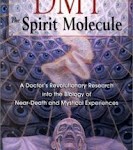
I have written before about Dr. Rick Strassman and his book, DMT: The Spirit Molecule. Now the book is being made into a movie. The documentary will include interviews with all of the DMT and ayahuasca heavy hitters — anthropologist Marlene Dobkin de Ríos, visionary artist Alex Grey, psychiatrist Charles Grob, psychiatrist Stanislav Grof, author Graham Hancock, anthropologist Luis Eduardo Luna, ethnopharmacologist Dennis McKenna, poet Dale Pendell, cognitive psychologist Benny Shanon, and many more, including, of course, Rick Strassman, who is also the coproducer.
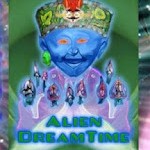
In many ways, Terence McKenna was a performance artist. With his distinctive voice and self-deprecating humor, he could make even his goofiest ideas sound compelling. One of his great performances took place on February 26 and 27, 1993, at the Transmission Theater, San Francisco, in a multimedia techno-rave event called Alien Dreamtime, which combined McKenna’s improvised meditations with the neo-psychedelic visuals of Rose X, and ambient techno improvisations by Space Time Continuum and didgeriduista Stephen Kent.

Discussing the article:
Hallucinogens in Africa